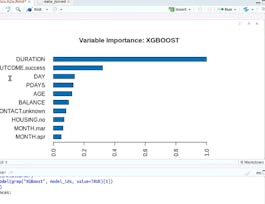In this course, the instructor will discuss various uses of regression in investment problems, and she will extend the discussion to logistic, Lasso, and Ridge regressions. At the same time, the instructor will introduce various concepts of machine learning. You can consider this course as the first step toward using machine learning methodologies in solving investment problems. The course will cover investment analysis topics, but at the same time, make you practice it using R programming. This course's focus is to train you to use various regression methodologies for investment management that you might need to do in your job every day and make you ready for more advanced topics in machine learning.



Using R for Regression and Machine Learning in Investment

Instructor: Youngju Nielsen
Sponsored by FutureX
Recommended experience
What you'll learn
Understanding the basic common concept of machine learning
Familiarizing with most commonly used methodology, regression
Distinguishing in-sample and out-of-sample results and leading to well-performing models in a real-life
Details to know

Add to your LinkedIn profile
1 assignment
See how employees at top companies are mastering in-demand skills


Earn a career certificate
Add this credential to your LinkedIn profile, resume, or CV
Share it on social media and in your performance review

There are 2 modules in this course
Understand the characteristics of predictive models and various data in investment The instructor will give you the big picture of the algorithm-driven investment decision-making process. After you understand that, we will review the regression concept and connect it with the core concepts of machine learning methodologies.
What's included
5 videos9 readings
Use regression methodology for various investment analysis purpose and improve models by using ridge, lasso, and logistic regression. First of all, you will learn how you can gauge investment strategy using backtesting. You learned the first component of investment strategy, returns, in the first week. You will expand your study to assessing investment risks. To understand stocks' risks, you will calculate covariance and correlation matrix using historical time-series stock return data. You will extend this to market factor and three-factor models to understand the risk you are facing with your investment. Finally, you will calculate factor exposure using a 3-factor model from week 2 and separate common factor risk and idiosyncratic risk of the stock.
What's included
5 videos10 readings1 assignment
Instructor

Offered by
Why people choose Coursera for their career




Recommended if you're interested in Business

Coursera Project Network

Coursera Project Network

Rice University

EDHEC Business School

Open new doors with Coursera Plus
Unlimited access to 10,000+ world-class courses, hands-on projects, and job-ready certificate programs - all included in your subscription
Advance your career with an online degree
Earn a degree from world-class universities - 100% online
Join over 3,400 global companies that choose Coursera for Business
Upskill your employees to excel in the digital economy


